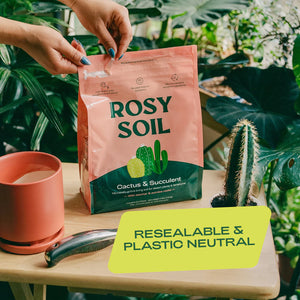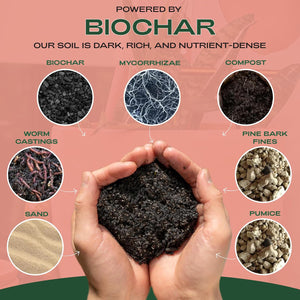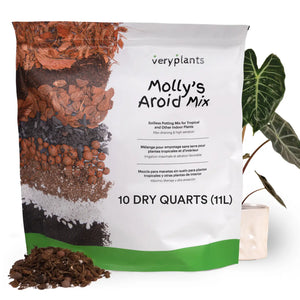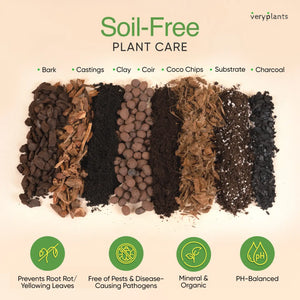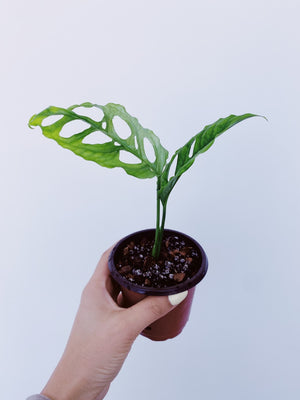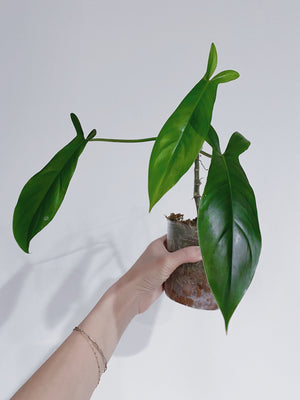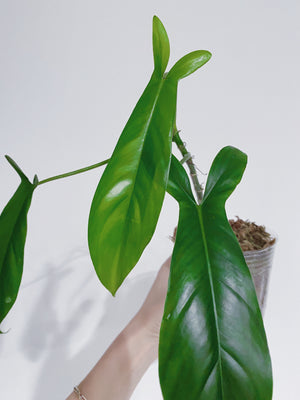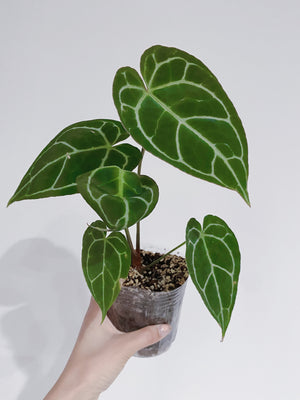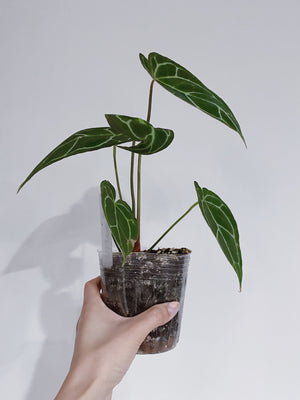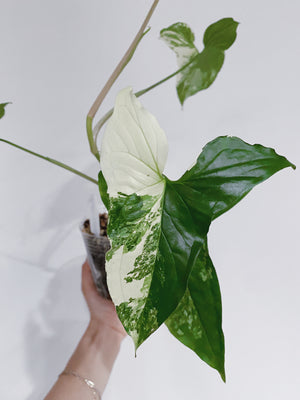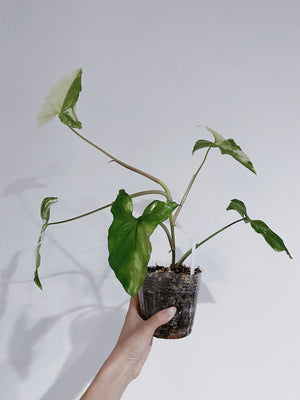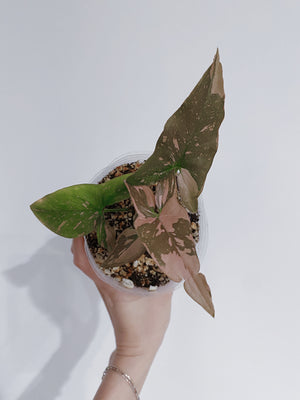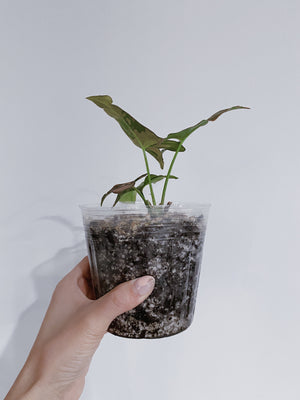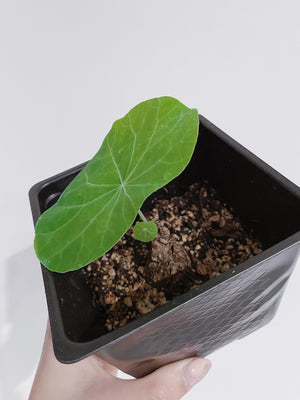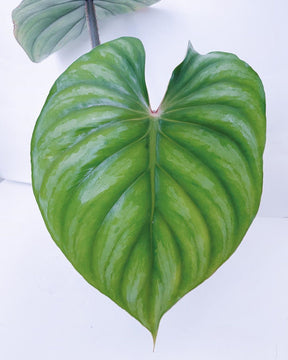Heartleaf Philodendron Care 101 - Tips & Mistakes to Avoid
 Heartleaf Philodendron: @RootedHues
Heartleaf Philodendron: @RootedHues
Looking for a pretty but low-care plant to keep you company when you come home? Or when you are quarantined?
Consider the Heartleaf Philodendron! (Philodendron hederaceum).
Whether you want a petite plant on your dining room table or a jungle vine, this versatile plant can accommodate your wishes.
What to Expect
The heartleaf philodendron has pretty 2-3” wide, heart-shaped leaves. You can often find the leaves cascading down the sides as a hanging basket.
However, this plant can go from demure to full-fledged tropical vine if you give it a support to grow on. The leaves can exceed one foot long when grown in that manner (over the course of several years).
In the wild, heartleaf philodendron vines can grow as high as 20 feet, but don’t worry – that is very unlikely to happen in your home.
Basic Care
If you think of houseplants as fussy, think again. Philodendron hederaceum care is a piece of cake.
Light
As a literal jungle plant, the heartleaf philodendron likes bright shade. While it can be difficult to simulate the diffuse light of a rainforest, this plant is tolerant of a range of conditions.
But do not put it in direct sunlight! That can burn the leaves.
Now shade is another matter, and this philodendron can tolerate conditions ranging from shade to sunlight filtered by a curtain – the ideal condition.
Temperature
Conveniently, this philodendron prefers the same temperatures as most people.
Ideal temperatures are 65-70ºF at night and 75-85ºF during the day.
The only thing to watch out for is to not let it get below 50ºF.
Humidity
These types of plants prefer high humidity (think jungle again), but they can tolerate the low levels of humidity of most households.
If you want the best conditions for your plant, you can put the pot on stones and place water in them (below the level of the pot).
Misting periodically will also help to keep the levels of humidity high.
Watering
Here comes the difficult part. Most houseplants are killed by overwatering.
Yes – it is possible to give heartleaf philodendrons too much love.
Water thoroughly with lukewarm water, and then let the top inch of the soil dry out before you water again. Do not let your plant stand in water!
Cut back on the amount of watering during the winter.
Flush Your Plant
Tap water contains salts that can build up in the soil and burn the leaves.
To prevent this, periodically flush water through the pot to get rid of the salts. If the plant is small enough, just take it to your sink and run water through it.
You can tell that you need to do this when the water that drains from the bottom of the pot is yellow.
How to Fertilize
This can be one of the trickier aspects of growing a houseplant.
Too much fertilizer, and the tips of the leaves can turn brown and curl. Too little, and your plant may not thrive.
Fertilize every 3-4 months with a general houseplant fertilizer that is soluble. Just make sure to dilute it. Or you can use a time-release fertilizer.
Cut back on fertilizing during the winter.
Repotting Your Heartleaf Philodendron
You should be able to tell when your heartleaf philodendron is getting rootbound.
Choosing the Pot and Soil
As with all house plants, don’t go from a little pot to a huge one. Choose a pot that is no more than 2” larger than the current pot.
While normal indoor potting soil is sometimes recommended, it is often too dense and holds too much water.
If you can, mix 1/3 each of potting soil, peat moss, and perlite.
This will keep your plant from getting water-logged.
How to Repot
- Water the plant thoroughly the day before you plan to repot it. This will reduce the amount of stress from the process.
- Add soil to the new pot, to the level where you will add the plant.
- Put your hand over the pot, so that the stem rests between your fingers.
- Turn the pot over with your other hand and gently squeeze it until it comes out of the pot.
- If the roots are wound together, cut them from the top to the bottom to encourage new growth.
- Fill the pot with soil so that the top is even with that of the soil from the previous pot.
- Water until you see it running out of the bottom of the pot.
Pruning
You should periodically prune off dead leaves and growth. Use scissors or pruning shears.
Disinfect your shears, so you don’t spread any plant diseases. You can do that with a 1:9 solution of bleach to water or 90% rubbing alcohol.
Some people like to have wild plants that grow as far as they can, while others like nice bushy compact plants.
Your preference will affect the amount of pruning that you should do.
You don’t have to get hardcore with pruning. Pinching off the tips of the vines will encourage the plants to grow bushier.
Propagation
If you are not satisfied with just one heartleaf philodendron, you can take cuttings to create more!
If you cut a vine below a leaf node and put it in water, it will grow a new plant, which you can then put in soil! Or you can take cuttings and put them directly in soil.
Another option for those who like a challenge is to divide the root clump. This is a good time to check that the roots are healthy and white.
 Philodendron Hederaceum: @RootedHues
Philodendron Hederaceum: @RootedHues
Problems
This philodendron typically has very few problems. Like all plants however, it can develop root rot if you overwater it.
Also these plants are fairly resistant to pests, but they can fall prey to mealybugs, scale, aphids, and spider mites.
If you find little insects on your heartleaf philodendron, start by periodically spraying it with water. If that doesn’t work, use insecticidal soap, but make sure to spray both sides of the leaves.
Mealybugs
Watch out for white fluffy patches that look like little bits of cotton. Those are the dreaded mealybugs.
Given the chance, these pernicious insects will infest every crevice in your plant and kill it, so leap into action if you see them.
You can start by going after them with a Q-tip moistened with rubbing alcohol.
If things go downhill, you should treat the leaves with the insecticidal soap.
Heartleaf Philodendron is Not Devil’s Ivy
While the two plants do look similar, the heartleaf philodendron is a totally different type of plant than Devil’s Ivy (pothos).
Both types of plants like similar conditions, but pothos has larger, waxy leaves that often have markings on them. That doesn’t stop people from trying to sell them as philodendrons!
Both plants are in the arum family, but the heartleaf philodendron hails from the Caribbean, while Devil’s ivy came to us from southeastern Asia.
Be Careful Around Pets and Small Children
While eating a philodendron won’t kill you, it is a very bad idea. The plants make a toxin called calcium oxalate that can burn your mouth and cause swelling.
If you have young children or pets prone to nibbling your greenery, put the plant up out of the reach – the perfect excuse to create that lovely hanging basket!
Now that you know how to care for a heartleaf philodendron, it should be your companion for many years with little fuss.
Written by
Helga George

